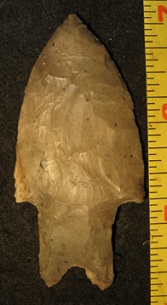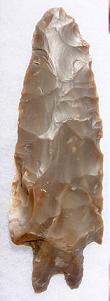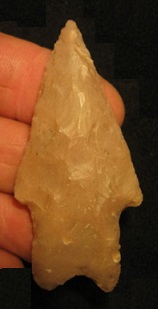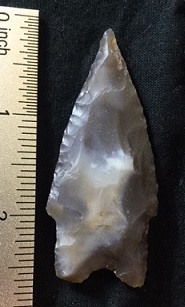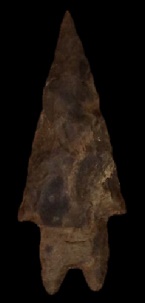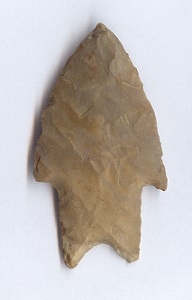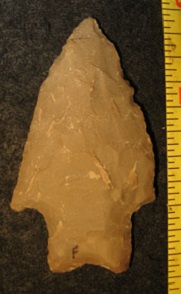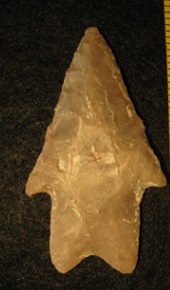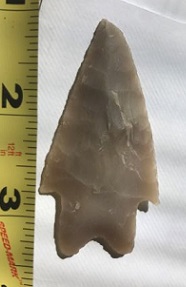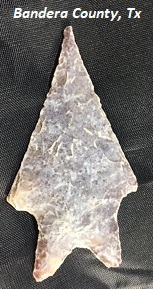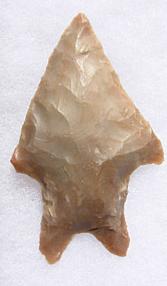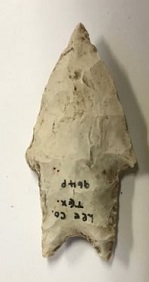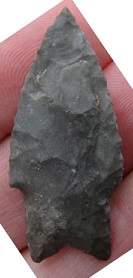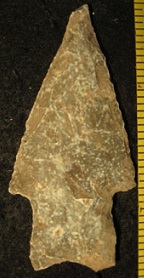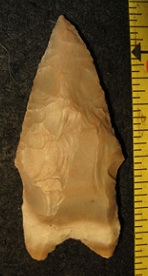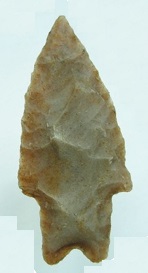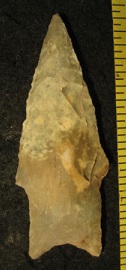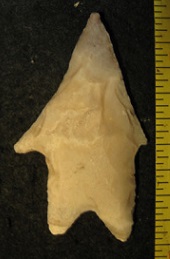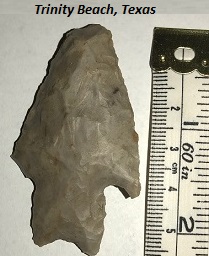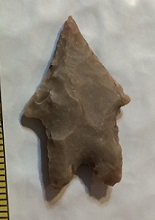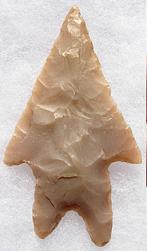Name Details:
Named By: J. Charles Kelley
Named For: Area examples were found
Date Identified: 1947
Type Site: Pedernales River, Edwards Plateau, central Texas
Pedernales
(Pedernales Indented Base)
AKA: Pedernalis (Cambron)
Cluster:
Date:
Cultural Period:
3,000 - 2,000 B.P.
Transitional Archaic
Neoglacial to Roman Warm
Glacial Period:
Culture:
Outline is Representative of Common Size and Shape:
Description of Physical Characteristics and Flaking Pattern:
This is a thin medium to
large (typically 2.5 to 3.5 inches) triangular stemmed point with a flattened cross section. The blade may vary from excurvate to straight. However, heavily
re-worked examples may have an incurvate to recurvate blade. The shoulder are
prominent and most commonly barbed, but the barbs may diminish as the point is re-sharpened. The stem is primarily straight, but may be slightly contracting. The base is most notable bifurcated, but may range to slightly concave.
The basal notch may result in a flute like flake on one or both sides.
The stem rarely has hafting region grinding or smoothing. This point usually has a high quality of workmanship and has a random flaking pattern.
Size Measurements: Total Length - 30 to 130 mm (60 to 90 mm average), Stem
Length -
15 to 20 mm, Blade Width - 30 to
50 mm, Stem Width - 15 to28
mm, Thickness - 5 to 7 mm, Basal Concavity - 5 to 8 mm
Distribution:
Distribution Comments:
This point is primarily found in
central Texas and into the lower Rio Grande region. Frequency
decreases into the coastal regions of Texas and into the Trans-Pecos
area. Suhm and Krieger (1954) noted that rarely these points are
found outside this distribution, but those could be considered
intrusive.
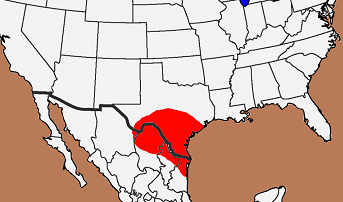
Additional Comments:
The most identifiable type is the bifurcated stem or the "classic" style. However, the base may be slightly concave which is more difficult to identify as
this type (picture 2). Some re-sharpened examples with the shoulders re-worked may take on a lanceolate appearance (W11).
Cambron (1969) refers to this point as a Pedernalis point. He reports examples being found at Stanfield-Worley Bluff Shelter, Flint Creek Rock Shelter, and Flint River Shell Mound in Alabama.
Other points in this Cluster:
Point Validity:
Kelley was a distinguished
anthropologist who served as Curator of the Archaeological Museum at the University of Texas-Austin and was instrumental in setting up the Department of Anthropology at the University of Texas-Austin. He specialized in the archaeology of western Texas. This type was named in a professional publication and has many professional references. This is considered a valid type.
.
Age Details:
References: (See Reference Page, Entry Number):
8,
12, 23, 30, 115, 177, W11
Pedernales Projectile Point, Pedernales Arrowhead

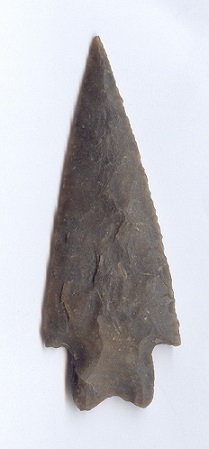
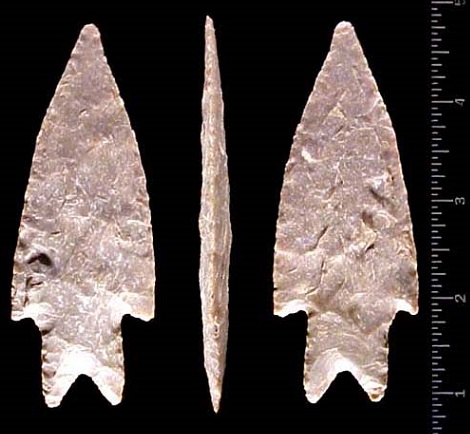
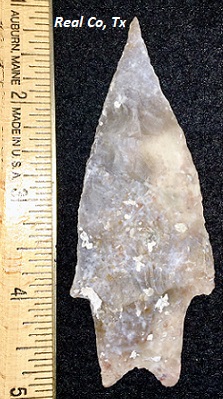
.jpg)
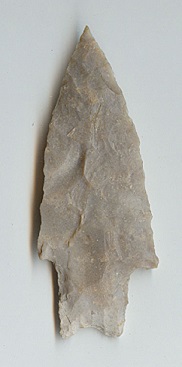
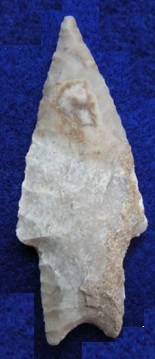
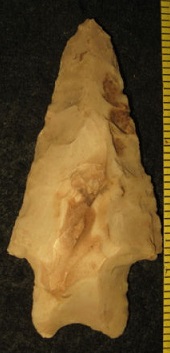
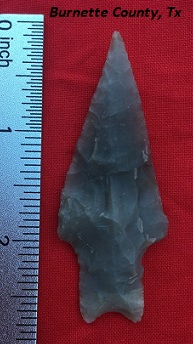
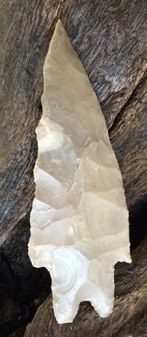
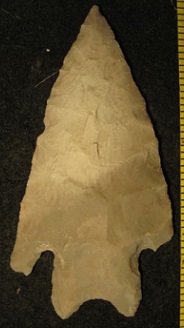
.jpg)
